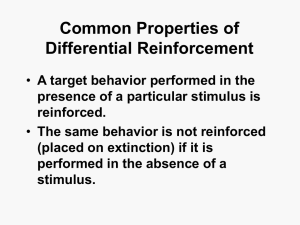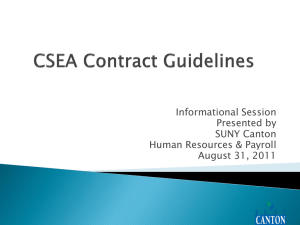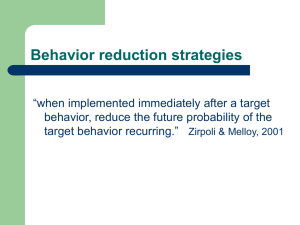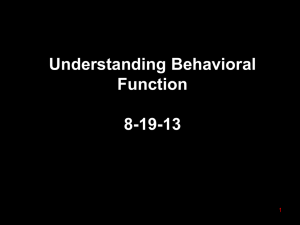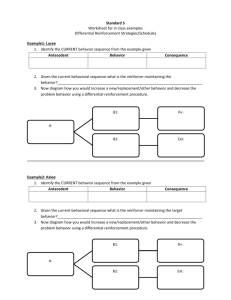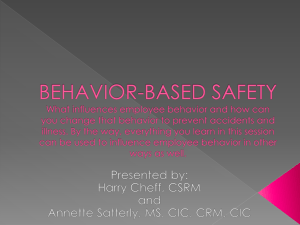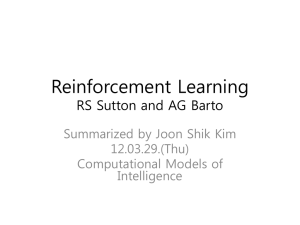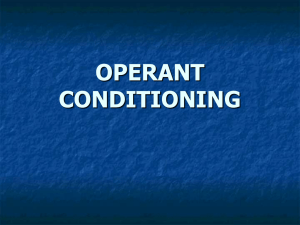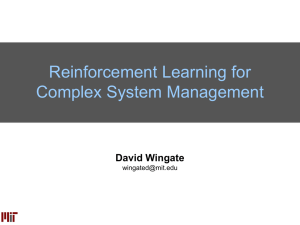Overview of Advance Behavior Analysis
advertisement
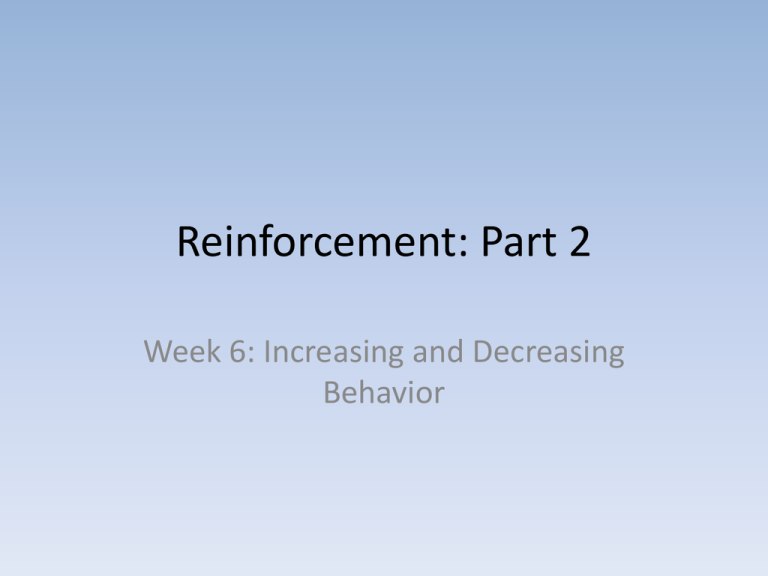
Reinforcement: Part 2 Week 6: Increasing and Decreasing Behavior Differential Reinforcement • Reinforcing one response class while withholding reinforcement from another – Popularity & Restrictiveness – Extinction is a component of D.R. – Two concurrent operants on separate schedules of reinforcement DRI & DRA • DRI: Reinforce a behavior that cannot occur at the same time as the target behavior to be reduced. – E.g. Inappropriate verbalizations • DRA: Reinforce a behavior that is different in topography but serves the same function – Could be compatible! – E.g. Talking out Your turn • Write down one example of how: – Differential Negative Reinforcement may be used for: • Incompatible behavior • Alternative Behavior Guidelines for using DRI/DRA • Select behavior already in learner’s repetoire • Occurring often enough to contact contingencies • Equal or lesser effort compared to target behavior • Likely to be reinforced naturally • Consistency in reinforcer/extinction delivery – 100% integrity not required, but better. DRO (other or “zero”) • Providing reinforcement for no responding • Interval DRO: – Fixed: Your turn – Variable: Your Turn • Momentary DRO: – Fixed: Your Turn – Variable: Your Turn Guidelines for Using DRO • Recognize limitations of DRO • Set intervals that assure frequent reinforcement • Watch out for accidental reinforcement of other negative behavior • Gradually increase DRO Interval – Constant duration, proportionally, learners performance • Generalize application to Other: Times, settings, practitioners, etc. DRL • Reinforcement for lower rates of behavior – Full session DRL: Really a VI Schedule (based on all full session). • Use if zero levels are appropriate – Interval DRL: Divide session into equal intervals and provide R+ • Use if full session will not provide sufficient R+ Rate – Spaced-Responding DRL: Set time limit between intervals (i.e. increasing IRT). • Use if you want to maintain the behavior but at a lower rate Guidelines for using DRL • • • • • Recognize limitations Choose most appropriate procedures Use Baseline data to guide Initial IRT Limits Gradually Thin the DRL schedule Provide feedback to the learner Behavior Analytic ProblemSolving Model Beginning to pull it all together Components • Contextual Variables: – Behavior occurs in some contexts but not others • Antecedent Stimuli: Environmental Triggers • Individual Mediators: Internal Triggers – UMO & CMO • Individual Behavior Deficits: – Try to reframe all behavior this way (your turn) • Behavior: – Not enough R+ or too much response effort • Consequences: – Consider function (careful of response topography and response class).
